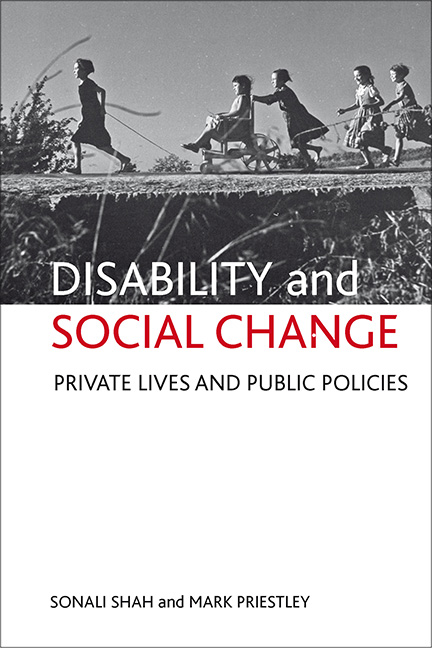seven - Living with ‘disability’
Published online by Cambridge University Press: 01 September 2022
Summary
Throughout this book the main focus has been to show how interactions with changing public policies and institutions affected people's private lives, and how individuals and their families navigated life choices in policy contexts. The two preceding chapters illustrated specific developments with reference to education and employment. This final chapter takes a step back to review, more holistically, how disability revealed itself in people's lives over time and how this impacted on the negotiation of personal identity. It shows how public policies and institutions play an important part in structuring the social spaces, relationships and life course expectations that come to define who is seen as ‘disabled’. The discussion considers the extent to which opportunities to ‘come out’ as disabled have changed over time.
The examples show how encounters with public policies contributed to processes of making disability known in public spaces (for example, where disability status was marked out by labelling, differential treatment or physical segregation). They also show how public spaces framed a sense of disability in private worlds. It is equally important to appreciate changes over time in the kinds of cultural resources and role models available to young people as they seek to make sense of tensions between the public and private. Looking at the work of identity construction in this way helps to demonstrate some of the significant social changes that have taken place since the 1940s (not least in the development of a new disability culture and politics within civil society). The chapter deals first with the kinds of identity scripts and resources that were available to people, and then with the ways in which public and private spaces framed the construction of disability identities.
Intergenerational learning
It is generally assumed within cohort studies that different generations find themselves exposed to ‘different rights, duties, statuses, roles, privileges, disenfranchisments’ (Foner, 1988, p 176). However, it is also acknowledged that successive generations co-exist alongside each other and that cultural ideas and norms are transmitted from one to the next (Manheim, 1952). This assumption raises some questions in the case of young disabled people, the majority of whom are born to non-disabled parents and some of whom have been socially segregated by public institutions.
- Type
- Chapter
- Information
- Disability and Social ChangePrivate Lives and Public Policies, pp. 147 - 174Publisher: Bristol University PressPrint publication year: 2011

